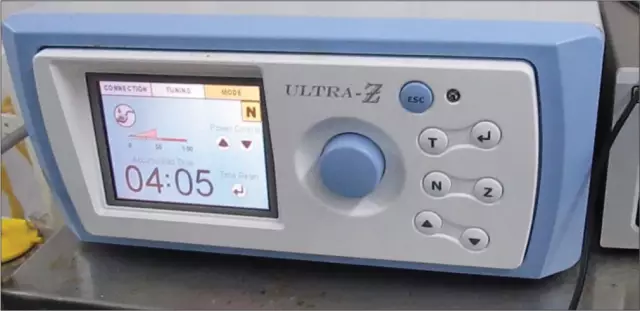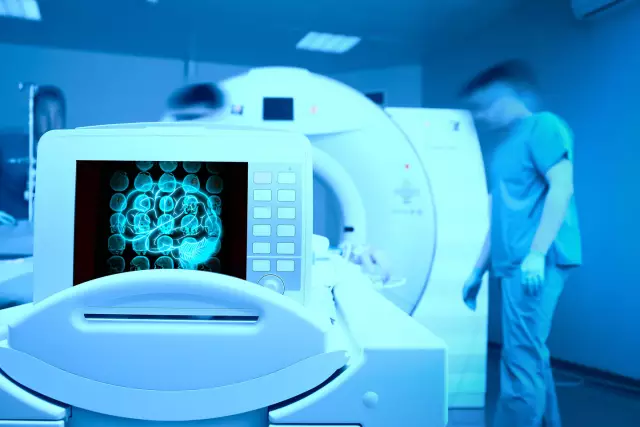- Author Rachel Wainwright [email protected].
- Public 2023-12-15 07:39.
- Last modified 2025-11-02 20:14.
MRI: features of the procedure
Magnetic resonance imaging (MRI) is one of the most common procedures around the world. MRI uses a strong magnetic field and radio waves to create detailed images of organs and tissues in the body. Since its invention, doctors have continued to improve MRI techniques to assist in medical research.

An MRI allows doctors to see what's going on inside the body. These scans do not emit radiation, unlike CT and X-rays.
MRI can scan bones, organs, and tissues, making it ideal for a complex part of the body such as the head.
MRI shows a higher level of detail than other imaging techniques, especially in soft tissue. This is important when examining the brain or brainstem for damage or disease.
A doctor may recommend an MRI head scan if they suspect a person has:
- brain aneurysm;
- blocked arteries;
- a brain tumor;
- a chronic condition that affects the head, such as multiple sclerosis;
- eye or inner ear problems;
- epilepsy;
- cerebral hemorrhage or stroke;
- hydrocephalus or fluid in the brain;
- infections in the head or brain.
Training
First, the doctor will ask a series of questions about the patient's medical history.
Radiologists also need to know if a woman is pregnant. Doctors generally do not recommend an MRI scan during pregnancy because it is unclear if magnetic force can affect fetal development.
They will also ask if the person has any metal objects, such as piercings, metal plates, watches, or jewelry. This can interfere with scanning and the person must remove them before entering the scanner.
Other metal objects that can interfere with scanning include:
- clamps of the brain aneurysm;
- cochlear implants;
- dental fillings and bridges;
- eye implants;
- metal fragments in the eyes or blood vessels;
- metal plates, wires, screws or rods;
- surgical clamps or staples.

During the test, the patient will be given a hospital gown but is sometimes allowed to wear their own clothing. You will then be prompted to lie down in the apparatus and remain motionless during the test. When everything is ready, the patient's table is inserted into the machine, where the MRI magnet is also located. Once inside the machine, patients can hear the ventilator and feel the air being blown out. Some clicking sounds may be heard during shooting. Patients are often given headphones or earplugs to reduce sound, and a sedative can also be requested if needed to make it easier to stay in place. The test is not painful. The only discomfort may be due to the fact that you lie on a hard table for a long time, or due to the limited space inside the machine,which can make some people claustrophobic.
Found a mistake in the text? Select it and press Ctrl + Enter.






